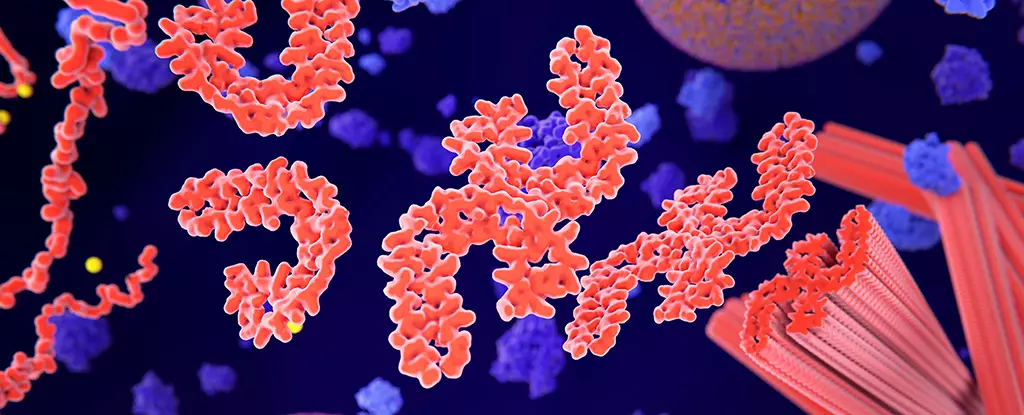Alzheimer’s disease, a neurodegenerative disorder, poses one of the most significant challenges to global health. The complexity of its pathology largely stems from the presence of misfolded proteins that disrupt neuronal function, which ultimately leads to cognitive decline. Recent groundbreaking research has illuminated potential pathways for treatment, particularly through a novel drug known as RI-AG03, which shows promise in tackling one of the disease’s most insidious culprits: tau protein aggregation.
To grasp the significance of RI-AG03, it is essential to understand the dual nature of tau proteins. In a healthy brain, tau proteins serve vital roles in maintaining the structural integrity of neurons by stabilizing microtubules—essential components for neuronal transport. However, in Alzheimer’s patients, tau proteins undergo misfolding, leading them to cluster together, forming tangles and fibrils that can disrupt neuronal communication. This pathological aggregation not only hastens neuronal death but also impedes cognitive functions, creating a vicious cycle of degeneration.
The innovative aspect of RI-AG03 lies in its design as a peptide inhibitor specifically engineered to target the aggregation hotspots of tau proteins. According to the researchers, RI-AG03 effectively binds to two critical regions of the tau protein that are instrumental in promoting fibril formation. By acting as a ‘zipper blocker,’ RI-AG03 could significantly reduce the clumping of tau proteins—the harbinger of severe neurodegeneration. The implications of this targeting strategy are substantial; previous tau protein therapies have struggled due to their lack of specificity, often resulting in adverse side effects from off-target interactions.
The experiments conducted on fruit flies and human cell models reveal that RI-AG03 not only reduces tau tangling but also extends the lifespan of the fruit flies by a remarkable 35%. This highlights the drug’s potential to not just halt the progression of Alzheimer’s but to potentially rejuvenate neuronal health, thereby restoring some cognitive capacities affected by the disease.
The development of RI-AG03 underscores the transformative role of computational biology in modern medicine. By leveraging advanced computational models, scientists were able to design a drug that selectively inhibits tau protein aggregation while minimizing the impact on other proteins in the brain. This specificity is critical when dealing with such a delicate and complex system as the human brain, which is vulnerable to a wide range of neurochemical interactions.
In contrast to many aggregation inhibitors currently available, which indiscriminately affect various cellular processes, RI-AG03’s targeted mechanism reduces the risk of harmful side effects. According to research lead Dr. Anthony Aggidis, this specificity is what sets RI-AG03 apart in the ongoing quest to combat Alzheimer’s disease.
As promising as the results from fruit fly and cell culture studies may be, further research is needed to ascertain the efficacy of RI-AG03 in more complex biological systems. The next phase involves animal model testing, where the drug’s effects on mammals will provide crucial insights into its potential before moving onto clinical trials with human subjects. While the road ahead may be long, the success of similar tau-targeting approaches in animal models raises cautious optimism about the drug’s potential to translate into meaningful clinical outcomes.
Despite the historical challenges associated with translating tau-targeted therapies from animal models to human clinical successes, RI-AG03 represents a significant breakthrough in Alzheimer’s research. As more therapeutic options are explored, it may not only pave the way for innovative treatments but also foster hope for millions affected by this devastating disease.
RI-AG03 could mark a transformative step in the development of Alzheimer’s therapies. Its dual targeting strategy, designed to minimize side effects while directly addressing one of the disease’s core mechanisms, highlights the potential for future interventions. The journey from initial research to widespread clinical application will require careful navigation, but the scientific community awaits the next advancements with optimism.

